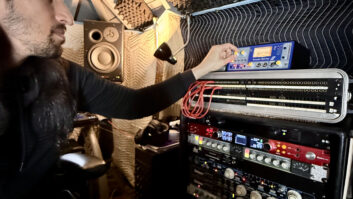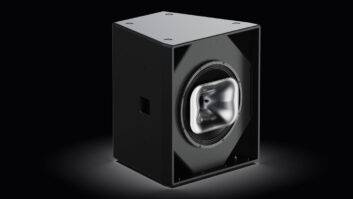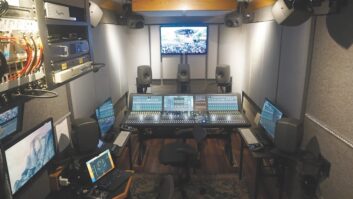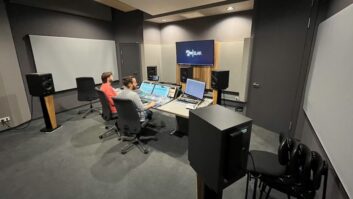New York, April 28, 2009 – Obscure 1950s singer/songwriter Elizabeth “Connie� Converse disappeared in 1974, leaving behind a haunting body of recordings that would remain virtually unheard for the next 35 years. Today, newly launched, New York-based Lau derette Recordings is proud to present How Sad, How Lovely, the first commercially available collection ever of Connie’s music. This 17-song album, diligently re-mastered at the renowned Elias Arts studios, documents the work of this enigmatic artist during her time in New York in the 1950’s. Studio Operations Manager for Elias Arts, New York, Dan Dzula, and his partner, sound designer/engineer David Herman, were responsible for every aspect of this new project. (Elias Arts is one of the leading original music production companies for advertising in the world.)
The Artist:
Elizabeth Eaton (“Connie�) Converse grew up in Laconia, New Hampshire in 1924. Most who knew her described her as a polymath. She attended Mt. Holyoke College on an academic scholarship beginning in 1942 and wrote for several campus publications. By 1944 she decided to leave college, at which point the records of her whereabouts are sparse until about 1949, when she made her way to New York City.
Over the course of the next decade, in addition to acquiring her new moniker, “Connie� wrote and recorded songs that captured the hearts of those close to her. Some were recorded by the artist in her Greenwich Village apartment, others by friends enamored of the music. These included animator Gene Deitch and his colleague Bill Bernal, who helped coordinate an appearance on the CBS Morning Show with Walter Cronkite. Despite these efforts, Connie’s music never reached an audience wider than, as she once put it, “dozens of people all over the world.�
In 1961 Connie tired of New York and left for Ann Arbor. She became increasingly despondent in the 1970’s, a period she described in letters as her “Blue Funk�. Finally, in 1974, Connie wrote a series of goodbye notes to friends and family, packed up her Volkswagen and disappeared. She has not been seen or heard from since.
The Music:
At first listen, Connie’s music seems to keep close company with the female folk artists who were her contemporaries. The knack for plaintive storytelling shares much with Peggy Seeger and Susan Reed. Reed knew Connie’s music well, and performed a set of her songs in 1961 at the Kaufmann Concert Hall in New York. But Connie’s music stands out from that of the American folk revival of the 1950’s. Her fluid and disarmingly intelligent poetry is often filled with the kind of contradictions that reflects an urban perspective. She is at once a maverick and a romantic, intellectual and spiritual, a staunch independent and a tender, pining lover. How Sad, How Lovely captures the broad spectrum of Connie’s music, including:
• Talkin’ Like You (Two Tall Mountains) – A light-hearted tune that weaves folk imagery into a cheerful assertion of independence.
• Empty Pocket Waltz – A tender ballad reminiscent of Irving Berlin and, perhaps, a theme song for the recession.
* Trouble – One of Connie’s more melancholy and poetic tunes – I’m going down to the willow tree to teach her how to cry.
The Process:
In 2004, David Garland, host of WNYC’s Spinning on Air, had gotten a hold of One by One, a song by (then unknown) Connie Converse, and played it one evening during his broadcast. Captivated by what they heard, Lau derette founders Dan Dzula and David Herman began an extensive research and restoration process to revive the 50-year-old recordings Connie left in the possession of her brother Philip, as well as those recorded by Gene Deitch at his home in Hastings-on-Hudson, NY.
After a high-definition digital transfer of the original tapes, producers Daniel Dzula and David Herman conducted the restoration and re-mastering work out of the newly expanded Elias Arts studios in downtown Manhattan, where Dzula serves as in-house engineer, composer, and sound designer.
“The chief concern throughout the process was to maintain the integrity of the original recordings. We needed to strike the balance between cultural preservation and audio fidelity,� said Dzula, who, along with Herman, worked to maximize the musical clarity of the songs, while retaining the imperfection and “roughness� that gives each recording its own unique character.
“Although the original tapes were in fantastic physical shape, the recordings needed a lot of work to be presented to the public,� Dzula continued. “Sonically speaking, the new studios at Elias Arts are just drop-dead-gorgeous. The quality of the rooms there allowed us to treat the audio with delicacy and confidence.�
CONNIE CONVERSE
How Sad, How Lovely
Innocence and cynicism, sly humor and deep melancholy, chastity and passion, the ancient and the modern, all mingle and coexist in Connie Converse’s world, seemingly without effort.
–Tony Sachs, Huffington Post
She touches, in her simple eloquent way, on something basic to us all: our need to reach out to one another.
–David Garland, WNYC
CD available online through Insound.com
and at select music retailers in New York City
Also available through
iTunes, Amazon, and Rhapsody
www.connieconverse.com
www.lauderette.com
www.myspace.com/connieconverse
About Lau derette Recordings:
With the Connie Converse project as a springboard, Lau derette Recordings exists to bring to light the work of important artists, non-artists, accidental artists and anti-artists, who otherwise might slip through the cracks of public awareness and be lost forever.
DAN DZULA is an Emmy Award winning writer/producer, and a Grammy nominated engineer. Having studied film at NYU’s Tisch School of the Arts, Dan thrives on all facets of creative studio work—composing, engineering, sound designing, mixing, and mastering—to which he brings a rooted craft and narrative sensibility. As Studio Operations Manager at Elias Arts, Dan also enjoys challenging work across all genres, media, and formats.
DAVID HERMAN is a sound artist, designer, engineer and producer living in Brooklyn, NY. With a background in theatrical sound design, David’s work has been heard on the Off-Broadway and downtown theater stages of New York, as well as in London and New Orleans. As an engineer, David’s credits include the original Broadway cast albums for 13, In the Heights (2008 Grammy Award for Best Cast Recording,) Next to Normal, and the solo debut of Yerba Buena’s Cucu Diamantes.
About Elias Arts:
A pre-eminent and world-renowned creative collective, Elias Arts is devoted to music composition, strategy and production. The company has employed the emotional strength of music and sound to launch, grow and reposition the most recognized brands and companies worldwide.
Elias Arts has worked with well over half of the Fortune 1000 companies, and has also helped turn numerous startups into everyday brand names. Among the clients Elias Arts has worked with are AOL, MasterCard, Sony, Columbia Pictures, Nike, Apple, Coca-Cola, AT&T, Ebay, Honda, Intel, Visa, Yahoo, Universal Studios, Microsoft, McDonalds, ESPN and General Motors, to name just a few.
With offices in Santa Monica and New York City, global resources and a renowned roster of gifted composers, producers, and marketers, the mission of Elias Arts is to constantly strive for creative excellence and distinction through the art of music and sound design. The company is the recipient of over 700 major industry awards from around the world. Please visit www.eliasarts.com.
###







